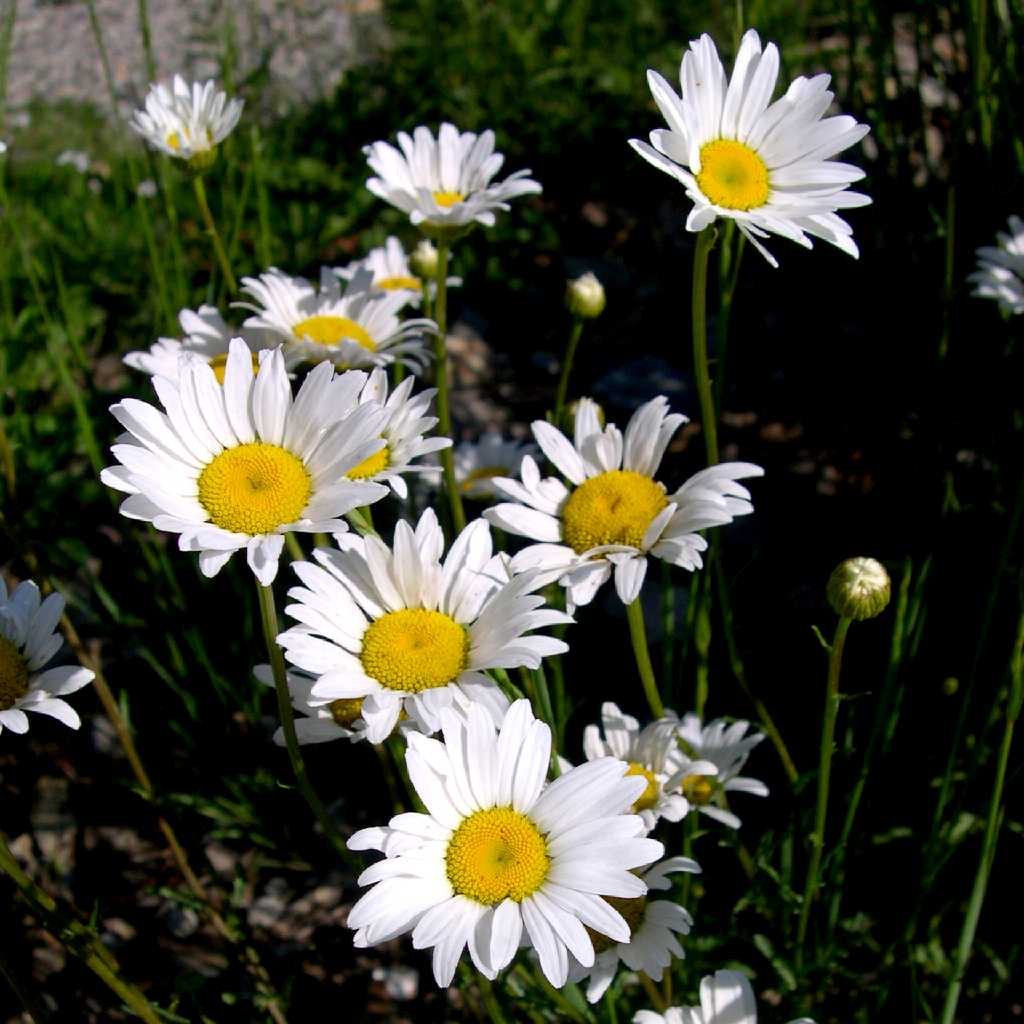Leucanthemum
|
Family: Asteraceae |
Perennials, (10-)40-130(-200+) cm (rhizomatous, roots usually red-tipped). Stems usually 1, erect, simple or branched, glabrous or hairy (hairs basifixed). Leaves mostly basal or basal and cauline; petiolate or sessile; blades obovate to lanceolate or linear, often 1[-2+]-pinnately lobed or toothed, ultimate margins dentate or entire, faces glabrous or sparsely hairy. Heads usually radiate, rarely discoid, borne singly or in 2s or 3s. Involucres hemispheric or broader, 12-35+ mm diam. Phyllaries persistent, 35-60+ in 3-4+ series, distinct, ovate or lance-ovate to oblanceolate, unequal, margins and apices (colorless or pale to dark brown) scarious (tips not notably dilated; abaxial faces glabrous or sparsely hairy). Receptacles convex, epaleate. Ray florets usually 13-34+, rarely 0, pistillate, fertile; corollas white (drying pinkish), laminae ovate to linear. Disc florets 120-200+, bisexual, fertile; corollas yellow, tubes ± cylindric (proximally swollen, becoming spongy in fruit), throats campanulate, lobes 5, deltate (without resin sacs). Cypselae ± columnar to obovoid, ribs ± 10, faces glabrous (pericarps with myxogenic cells on ribs and resin sacs between ribs; embryo sac development monosporic); pappi 0 (wall tissue of ray cypselae sometimes produced as coronas or auricles on some cypselae). x = 9. The three leucanthemums recognized here are weakly distinct and are sometimes included (with a dozen or more others) in a single, polymorphic Leucanthemum vulgare.
|

